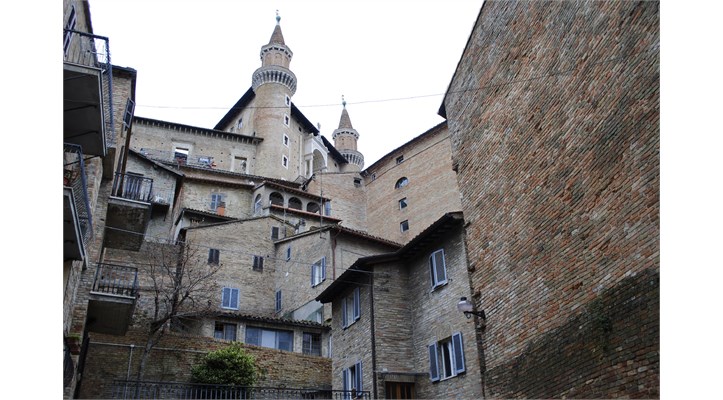
The synagogue is located at the entrance to a narrow street, near the city walls and is distinguished by an inscription from the mid ‘500 in which the hymn “Eternal God”, written by Rabbi Mordechai Dato, identified the ritual of local Italian Jews and those coming from Spain, Sephardic Jews, or Germany, Ashkenazi Jews.
Outside the building, there are no signs that indicate the presence of a Jewish place of worship. The only distinctive feature is evidenced by some deliberately broken bricks, in order to remind the faithful of the destruction of the Temple of Jerusalem.
In the front there are three gates: the right one leads to a basement with a well and oven, rooms always present in a synagogue. The well provided spring water for washing hands and the oven was used to bake unleavened bread.
The main door was the entrance reserved for men, while women entered from the left door to access the top floor where there is the women’s gallery, another ever-present element in synagogues.
In the hall there is a fountain for purification and two tombstones written in Hebrew: one commemorates the hospitality that the Dukes of Urbino gave to Jews who were persecuted elsewhere and the other commemorates the generosity of Mordechai and Pinchas Coen when the synagogue was rebuilt in 1859.
On the same wall there are six slits for various offerings destined to be used for lamp oil, the poor, books, and Tiberias (tzedakà), translated as the concept of charity but above all justice. Among the religious duties are recorded the obligation to welcome the main holiday Schabat (Saturday) and be worthy to receive the Arvat (evening Blessing). A short staircase leads to two doors: one opening to the temple hall and on the right that of the Talmud-Torah.
The main door leads directly into the room used for worship. It has a rectangular plan and leads out to the backyard, that was used for building the hut with intertwined palm, myrtle, willow and cedar branches in order to celebrate the feast of sukkot (huts), recalling the custom of the ancient nomadic Jews when they celebrated the harvest festival in the open.
Many of the inside decorative elements are identical to those present in the cathedral of Urbino as a tribute of respect and friendship towards the Jewish community. On the opposite wall, there is a high arched window with 4 rear windows, that light up the hall required to fulfill the obligation to recite the prayers only by reading them directly.
In the mid-800’s, the room location and furnishings were changed, inspired by the Sephardic synagogue at nearby Pesaro. The Urbino synagogue became bi-level where a double staircase leads to tevah or pulpit, two steps ascend to the holy Aròn, the ark and the subspace between those two elements is reserved for the faithful.
The Aròn or Holy Ark, redesigned from the original in a neo-classical style, is oriented towards Jerusalem and considered sacred because it contains the Torah sifre, the scrolls of the Law in which is written the name of God. The old Aròn remained in the synagogue of Urbino until 1906. It is now exhibited in the Jewish Museum in New York City. In front of the Aròn a lamp is lit as a symbol of the eternal light of the Torah.



